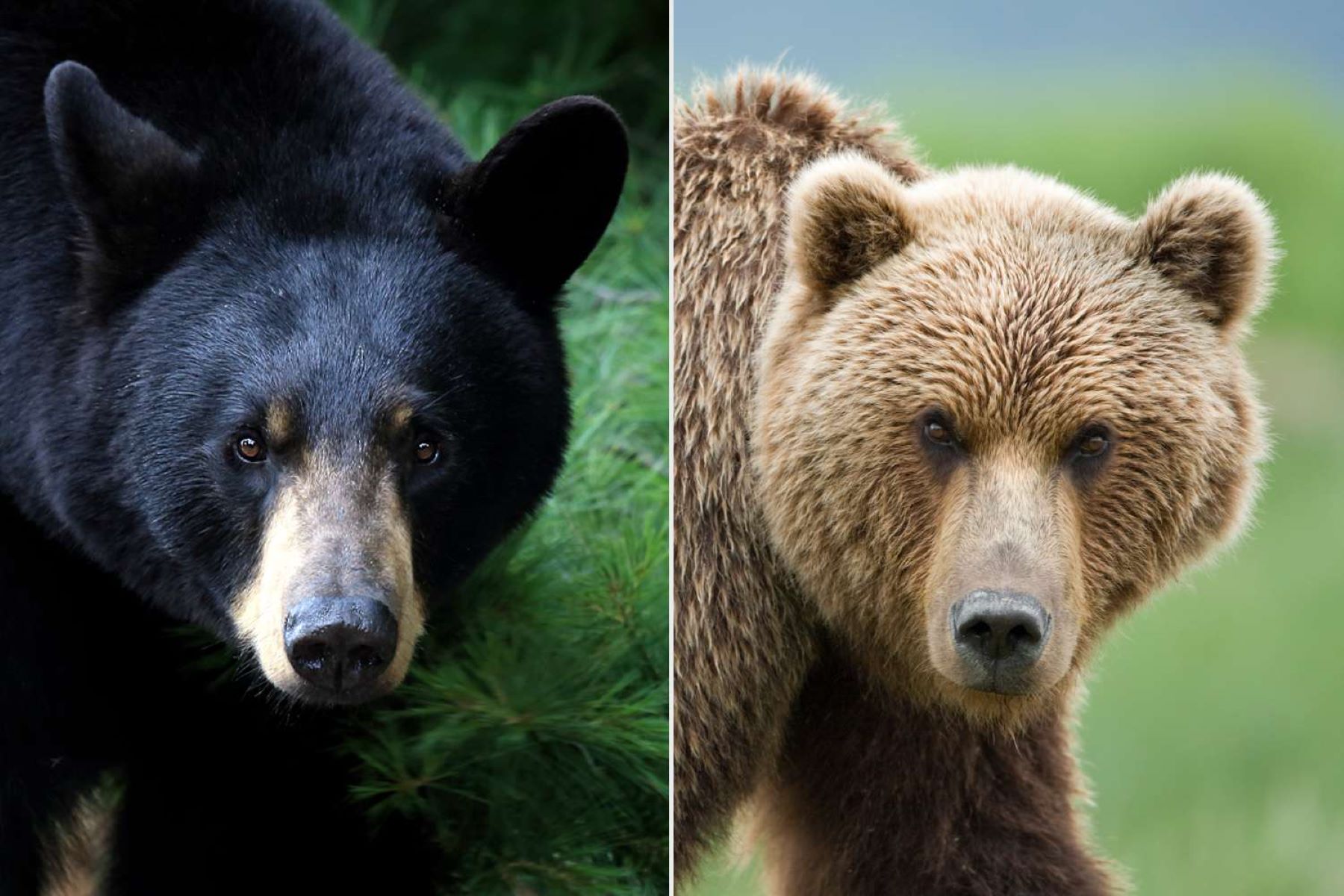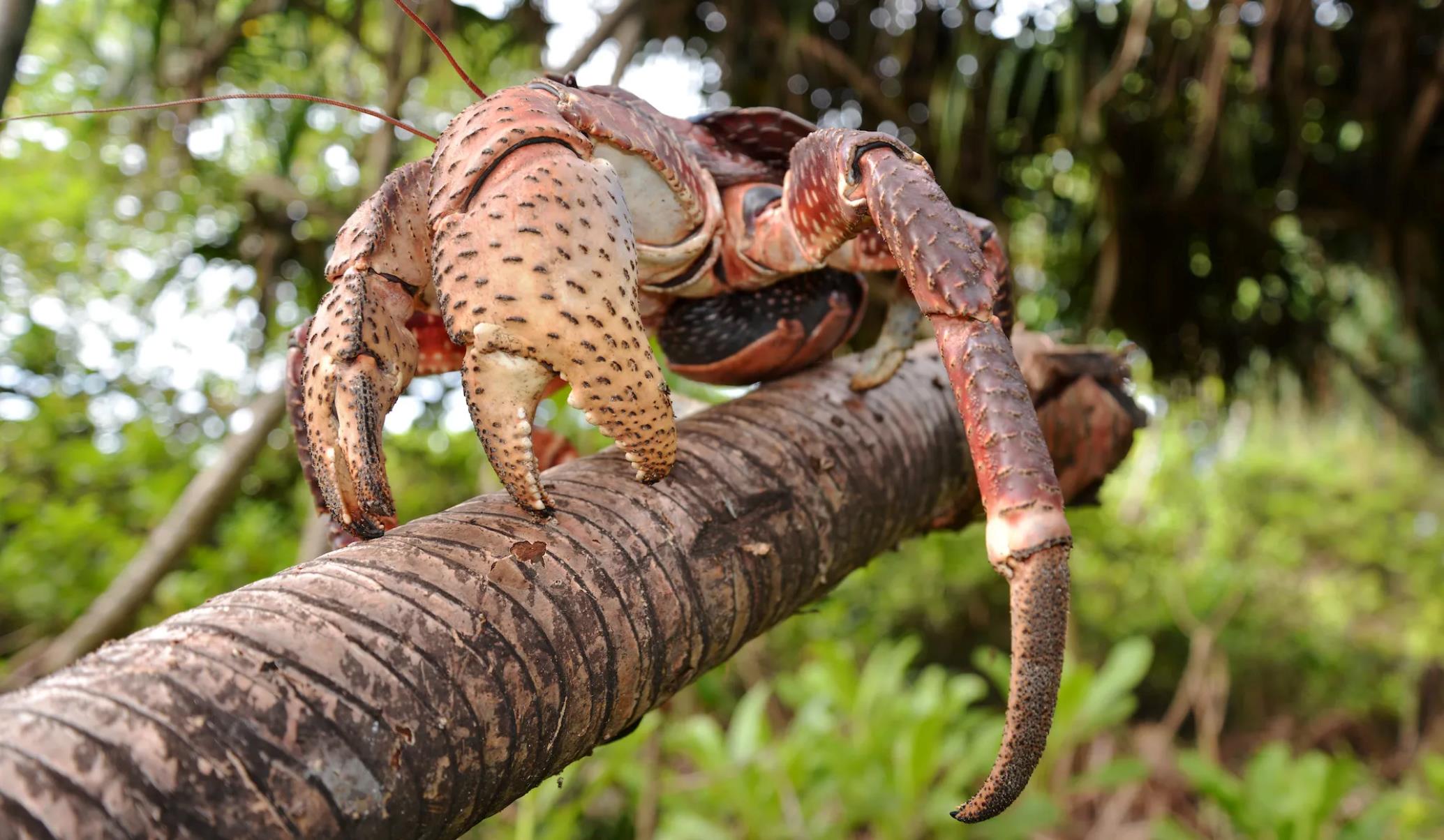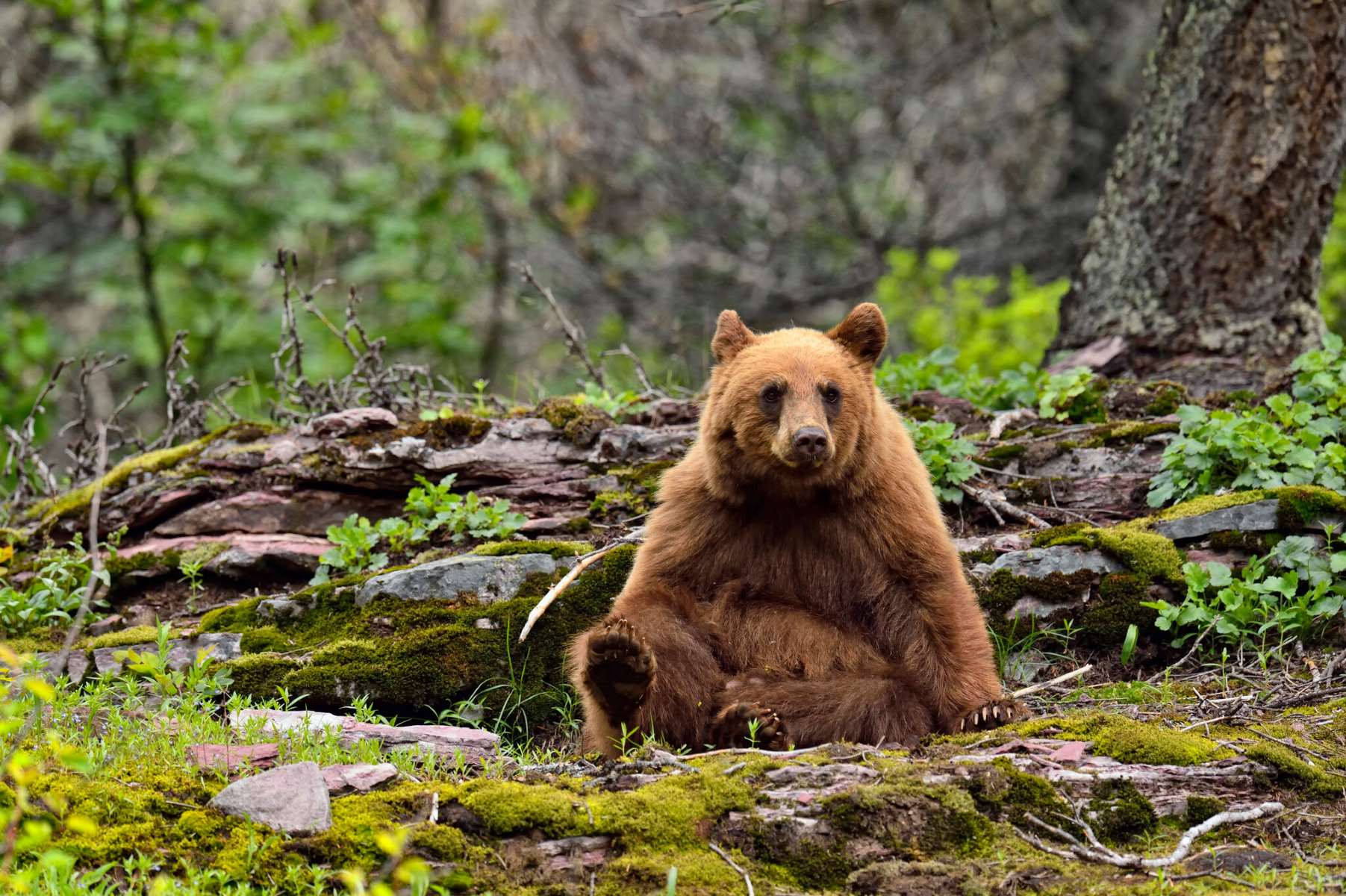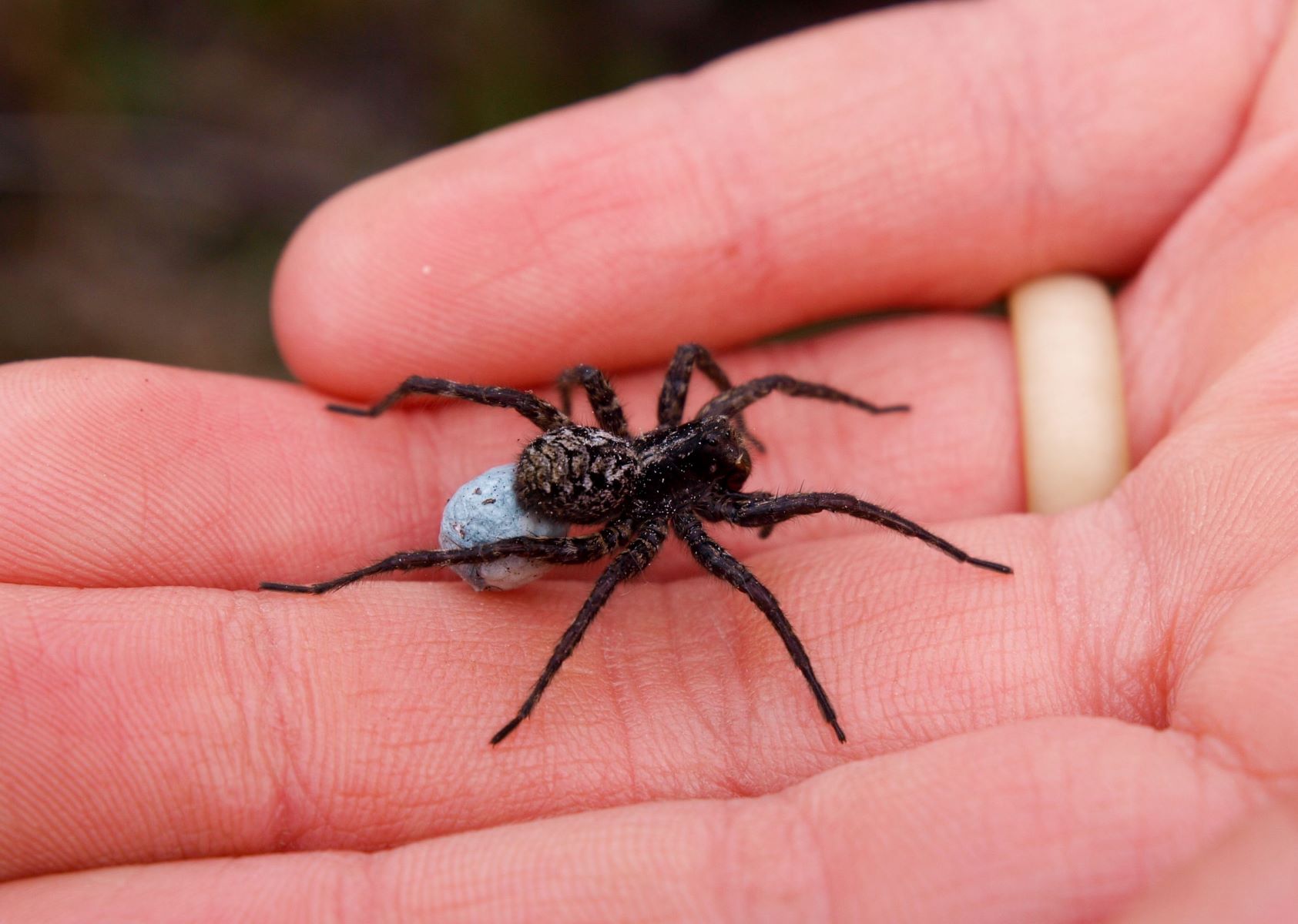Home>Science>Shocking Truth: Black Bears Vs Grizzly Bears – Who’s More Dangerous To Humans?


Science
Shocking Truth: Black Bears Vs Grizzly Bears – Who’s More Dangerous To Humans?
Published: February 6, 2024
Discover the science behind the danger posed by black bears and grizzly bears to humans. Uncover the shocking truth and stay informed.
(Many of the links in this article redirect to a specific reviewed product. Your purchase of these products through affiliate links helps to generate commission for Regretless.com, at no extra cost. Learn more)
Table of Contents
Introduction
Bears have long captivated the human imagination with their formidable presence and enigmatic behaviors. Among the various bear species, black bears and grizzly bears stand out as iconic symbols of the wilderness. These majestic creatures evoke both awe and fear, and their interactions with humans have been the subject of fascination and concern.
In this article, we will delve into the intriguing world of black bears and grizzly bears, exploring their physical characteristics, behavior, habitat, and most importantly, their interactions with humans. By shedding light on these aspects, we aim to uncover the shocking truth about which bear poses a greater danger to humans.
As we embark on this exploration, it's essential to approach the topic with a balanced perspective. While it's important to acknowledge the potential risks associated with bear encounters, it's equally crucial to dispel misconceptions and myths, fostering a deeper understanding of these remarkable creatures. By gaining insight into the behavior and habitats of black bears and grizzly bears, we can better comprehend the factors that influence their interactions with humans.
Join us on this captivating journey as we unravel the mysteries surrounding black bears and grizzly bears, ultimately unveiling the surprising realities behind their perceived danger to humans.
Physical Characteristics of Black Bears
Black bears, scientifically known as Ursus americanus, exhibit a remarkable array of physical traits that distinguish them from other bear species. These adaptable creatures boast a wide range of sizes, with adult males typically weighing between 130 to 500 pounds, while females generally weigh between 90 to 300 pounds. Despite their name, black bears can display a variety of colors, including black, brown, cinnamon, and even white, with the latter being particularly prevalent in certain regions.
One of the most distinctive features of black bears is their relatively short, curved claws, which are ideal for climbing trees and digging for food. Their strong, muscular bodies are complemented by a prominent shoulder hump, a characteristic trait that aids in identifying them. Additionally, black bears possess keen senses, including an acute sense of smell and excellent hearing, which contribute to their survival in diverse habitats.
The facial profile of black bears is notably different from that of grizzly bears, with a straighter facial profile and taller, more prominent ears. Their muzzles are generally lighter in color compared to their overall body, and they have a straight, Roman nose, adding to their distinct appearance. Furthermore, black bears are known for their agile and swift movements, enabling them to navigate through various terrains with remarkable dexterity.
In terms of size and physical attributes, black bears are often considered more compact and agile compared to grizzly bears. Their adaptability and diverse color variations make them a fascinating subject for wildlife enthusiasts and researchers alike. Understanding the physical characteristics of black bears provides valuable insights into their behavior and ecological roles, paving the way for a deeper appreciation of these captivating creatures.
Physical Characteristics of Grizzly Bears
Grizzly bears, scientifically known as Ursus arctos horribilis, are renowned for their imposing stature and formidable presence in the wild. These iconic bears exhibit a range of physical traits that set them apart as one of the most awe-inspiring species in the bear family. Adult male grizzly bears typically weigh between 300 to 850 pounds, while females generally weigh between 200 to 450 pounds, making them significantly larger than black bears. Their remarkable size and muscular build contribute to their commanding presence in their natural habitats.
One of the most striking features of grizzly bears is their distinctive shoulder hump, which is a prominent muscular mass situated atop their shoulders. This physical trait sets them apart from other bear species and serves as a powerful indicator of their strength and adaptability. Additionally, grizzly bears are characterized by their long, curved claws, which are ideal for digging, foraging, and capturing prey. These formidable claws are a testament to the grizzly bear's prowess as a skilled hunter and forager in diverse ecosystems.
In terms of coloration, grizzly bears often exhibit a wide range of hues, including shades of brown, blonde, and even silver-tipped fur, which can vary based on their geographical location. Their fur can appear grizzled, hence the name "grizzly," and they may possess a distinctive light-colored fur streak along their back and shoulders. This unique coloration adds to the allure of grizzly bears and contributes to their iconic appearance in the wild.
The facial profile of grizzly bears is characterized by a pronounced concave facial profile, which distinguishes them from black bears. Their ears are relatively short and rounded, and they possess a distinctive dished facial profile, giving them a distinctively fierce and commanding visage. Furthermore, grizzly bears are known for their robust build and powerful limbs, which enable them to navigate rugged terrains and assert their dominance in their respective habitats.
Understanding the physical characteristics of grizzly bears provides valuable insights into their evolutionary adaptations and ecological roles. These remarkable traits contribute to the grizzly bear's status as a symbol of strength and resilience in the natural world, underscoring the importance of conservation efforts to safeguard their populations and preserve their vital role in ecosystems.
Behavior and Habitat of Black Bears
Black bears are highly adaptable creatures, displaying a diverse range of behaviors and thriving in various habitats across North America. These resourceful bears are known for their elusive nature, often retreating to secluded areas to forage for food and seek shelter. Their behavioral patterns are influenced by a combination of factors, including seasonal changes, food availability, and interactions with other wildlife species.
In terms of habitat, black bears exhibit remarkable versatility, inhabiting a wide array of ecosystems, including forests, swamps, and mountainous regions. They are particularly adept at navigating dense vegetation and rugged terrain, utilizing their climbing abilities to seek refuge in trees when necessary. Black bears are also known to establish dens in secluded locations, such as hollow trees or underground burrows, where they hibernate during the winter months.
The foraging behavior of black bears is characterized by their omnivorous diet, which includes a diverse array of food sources such as berries, nuts, insects, and small mammals. Their keen sense of smell and dexterous paws enable them to efficiently locate and extract food from various environments. Additionally, black bears are skilled climbers, adept at ascending trees to access food sources and evade potential threats.
When it comes to interactions with humans, black bears typically exhibit a cautious demeanor, preferring to avoid confrontations whenever possible. However, human encroachment into bear habitats can lead to conflicts, especially in areas where food sources are scarce. It's essential for humans to exercise caution and implement measures to minimize potential conflicts with black bears, such as securing food and waste to prevent attracting them into residential areas.
Understanding the behavior and habitat of black bears is crucial for promoting coexistence and conservation efforts. By gaining insight into their ecological requirements and behavioral tendencies, we can work towards preserving their natural habitats and minimizing human-bear conflicts. Through responsible stewardship and awareness, we can ensure the continued presence of these remarkable creatures in the wild, enriching our natural landscapes with their presence.
Behavior and Habitat of Grizzly Bears
Grizzly bears, also known as Ursus arctos horribilis, are renowned for their distinctive behaviors and their ability to thrive in diverse habitats. These formidable creatures exhibit a complex range of behaviors shaped by their evolutionary adaptations and interactions within their ecosystems. Understanding the behavior and habitat of grizzly bears provides valuable insights into their ecological roles and the factors influencing their interactions with humans.
In terms of habitat, grizzly bears are highly adaptable, inhabiting a wide range of environments, including forests, alpine meadows, and tundra regions. Their ability to thrive in such diverse habitats is a testament to their resilience and adaptability as a species. Within these habitats, grizzly bears establish home ranges that encompass areas rich in food resources, suitable denning sites, and access to water sources. These home ranges serve as vital territories where grizzly bears engage in essential activities such as foraging, mating, and rearing their young.
The foraging behavior of grizzly bears is characterized by their omnivorous diet, which includes a diverse array of food sources such as berries, roots, insects, fish, and small mammals. During the salmon spawning season, grizzly bears exhibit remarkable fishing skills, utilizing their powerful physique and keen sense of timing to catch spawning salmon in rivers and streams. This seasonal abundance of food plays a crucial role in sustaining grizzly bear populations and influencing their behaviors throughout the year.
Grizzly bears are also known for their hibernation behavior, entering a state of dormancy during the winter months to conserve energy and survive harsh environmental conditions. Prior to hibernation, grizzly bears engage in hyperphagia, a period of heightened feeding activity aimed at building up fat reserves essential for sustaining them through the winter. They seek out suitable den sites in secluded areas, such as underground burrows or dense vegetation, where they can hibernate in relative safety.
In their interactions with humans, grizzly bears often display a wariness and a preference for avoiding confrontations. However, human activities, including habitat encroachment and unsecured food sources, can lead to conflicts between humans and grizzly bears. It is essential for humans to implement measures to minimize potential conflicts, such as proper food storage in bear country and respectful distance when encountering these magnificent creatures in their natural habitats.
Understanding the behavior and habitat of grizzly bears is crucial for promoting coexistence and conservation efforts. By gaining insight into their ecological requirements and behavioral tendencies, we can work towards preserving their natural habitats and minimizing human-bear conflicts. Through responsible stewardship and awareness, we can ensure the continued presence of these remarkable creatures in the wild, enriching our natural landscapes with their presence.
Interactions with Humans
The interactions between bears and humans have long been a subject of fascination and concern. Understanding these interactions is essential for promoting coexistence and minimizing potential conflicts. Both black bears and grizzly bears have distinct behavioral patterns and responses when encountering humans, influenced by a range of factors including habitat encroachment, food availability, and human activities.
Black bears, known for their elusive nature, typically exhibit a cautious approach when encountering humans. In most cases, they prefer to avoid confrontations and will often retreat to secluded areas when they sense human presence. However, human activities such as improper food storage and waste disposal can inadvertently attract black bears into residential areas, leading to potential conflicts. It is crucial for humans to implement measures to minimize these interactions, such as securing food and waste to prevent attracting black bears into populated areas. By fostering responsible stewardship and awareness, we can create environments where black bears and humans can coexist with minimal conflict.
Grizzly bears, with their imposing stature and formidable presence, also exhibit distinct behaviors when interacting with humans. They are known for their wariness and avoidance of confrontations, preferring to retreat from human presence whenever possible. However, human activities that encroach upon grizzly bear habitats can lead to heightened interactions and potential conflicts. It is essential for humans to exercise caution and respect when encountering grizzly bears in the wild, maintaining a respectful distance and minimizing behaviors that may be perceived as threatening. By fostering a deeper understanding of grizzly bear behaviors and habitats, we can work towards minimizing human-bear conflicts and preserving the vital role of grizzly bears in their ecosystems.
Overall, the interactions between black bears, grizzly bears, and humans are influenced by a complex interplay of factors. By promoting responsible stewardship, awareness, and proactive measures to minimize potential conflicts, we can create environments where bears and humans can coexist harmoniously. Through education and conservation efforts, we can ensure the continued presence of these remarkable creatures in the wild, enriching our natural landscapes with their presence.
Attacks on Humans by Black Bears
Attacks on humans by black bears are a rare occurrence, and it's essential to approach this topic with a balanced perspective. While black bears typically exhibit a cautious demeanor and a preference for avoiding confrontations, certain circumstances can lead to defensive or predatory behaviors that pose a risk to humans.
It's important to note that most black bear encounters result in the bear retreating or displaying defensive behaviors, such as bluff charges or vocalizations, as a means of establishing space and minimizing conflict. However, in rare instances, black bears may engage in predatory behavior, especially in situations where they perceive humans as potential prey or when they are defending a food source or their offspring.
Understanding the factors that can lead to black bear attacks is crucial for promoting safety and minimizing potential risks. Human behaviors, such as improper food storage, approaching bear cubs, or surprising a bear at close range, can trigger defensive responses from black bears. Additionally, in areas where human activities have encroached upon bear habitats, conflicts may arise, leading to potential confrontations.
In the event of a black bear attack, it's important for individuals to be prepared and equipped with knowledge on how to respond effectively. This includes strategies such as standing their ground, making themselves appear larger, and slowly backing away while avoiding direct eye contact. In the rare event of a physical attack, fighting back using any available means may be necessary to deter the bear.
Education and awareness play a vital role in mitigating potential conflicts between black bears and humans. By promoting responsible outdoor practices, such as proper food storage, maintaining a safe distance from bears, and understanding bear behavior, individuals can minimize the likelihood of negative encounters.
Ultimately, while the risk of black bear attacks is low, it's crucial for individuals to remain informed and prepared when venturing into bear country. By fostering a deeper understanding of black bear behavior and implementing proactive measures, humans and black bears can coexist with minimal conflict, ensuring the safety of both species in their shared environments.
Attacks on Humans by Grizzly Bears
Attacks on humans by grizzly bears, also known as Ursus arctos horribilis, are a topic that evokes both fear and fascination. These formidable creatures, with their imposing stature and powerful presence, command respect and caution in their natural habitats. While grizzly bear attacks on humans are rare, it is essential to understand the factors that can lead to such encounters and how to mitigate potential risks.
Grizzly bear attacks can occur in various contexts, often stemming from defensive behaviors or perceived threats to the bear or its offspring. In most cases, grizzly bears exhibit a wariness and a preference for avoiding confrontations with humans. However, when they feel threatened or cornered, their natural instincts may lead them to display defensive behaviors, such as bluff charges, vocalizations, or physical confrontations. Additionally, grizzly bears may engage in predatory behavior in situations where they perceive humans as potential threats or sources of food.
Understanding the circumstances that can trigger grizzly bear attacks is crucial for promoting safety and minimizing potential risks. Human activities that encroach upon grizzly bear habitats, such as hiking in bear country or improper food storage, can inadvertently lead to confrontations. Approaching a grizzly bear sow with cubs, surprising a bear at close range, or engaging in behaviors that may be perceived as threatening can also escalate the risk of an encounter.
In the event of a grizzly bear encounter, it is essential for individuals to be prepared and equipped with knowledge on how to respond effectively. Maintaining a respectful distance, making oneself appear non-threatening, and avoiding sudden movements are crucial strategies to minimize the risk of triggering defensive behaviors in grizzly bears. In the rare event of a physical attack, utilizing bear spray, standing ground, and playing dead in specific situations can help mitigate the severity of the encounter.
Education and awareness play a pivotal role in mitigating potential conflicts between grizzly bears and humans. By promoting responsible outdoor practices, such as understanding bear behavior, carrying bear deterrents, and respecting designated bear habitats, individuals can minimize the likelihood of negative encounters. Additionally, efforts to conserve and protect grizzly bear habitats contribute to fostering harmonious coexistence between humans and these iconic creatures.
Ultimately, while the risk of grizzly bear attacks is low, it is crucial for individuals to remain informed and prepared when venturing into bear country. By fostering a deeper understanding of grizzly bear behavior and implementing proactive measures, humans and grizzly bears can coexist with minimal conflict, ensuring the safety of both species in their shared environments.
Conclusion
In conclusion, the comparison between black bears and grizzly bears sheds light on the fascinating intricacies of these iconic species and their interactions with humans. While both black bears and grizzly bears evoke a sense of awe and respect, it is essential to approach the topic of bear encounters with a balanced perspective, dispelling myths and misconceptions while promoting responsible coexistence.
The physical characteristics of black bears and grizzly bears reveal unique adaptations that have enabled these creatures to thrive in diverse habitats. From the agile and adaptable nature of black bears to the formidable presence and fishing prowess of grizzly bears, each species embodies remarkable traits that contribute to their roles in the natural world.
Understanding the behavior and habitat of black bears and grizzly bears provides valuable insights into the factors influencing their interactions with humans. From foraging behaviors and hibernation patterns to their responses to human presence, these insights underscore the importance of promoting responsible stewardship and awareness to minimize potential conflicts.
The interactions between bears and humans are influenced by a complex interplay of factors, including habitat encroachment, food availability, and human activities. By fostering a deeper understanding of bear behaviors and habitats, individuals can work towards creating environments where bears and humans can coexist harmoniously, enriching our natural landscapes with their presence.
While the risk of bear attacks is low, it is crucial for individuals to remain informed and prepared when venturing into bear country. By promoting responsible outdoor practices, such as proper food storage, maintaining a safe distance from bears, and understanding bear behavior, humans can minimize the likelihood of negative encounters.
Ultimately, the shocking truth about black bears and grizzly bears is not centered solely on their potential danger to humans, but rather on the need for mutual respect, responsible coexistence, and conservation efforts. By fostering a deeper appreciation for these remarkable creatures and their vital roles in ecosystems, we can ensure the continued presence of black bears and grizzly bears in the wild, preserving the rich tapestry of our natural world for generations to come.














